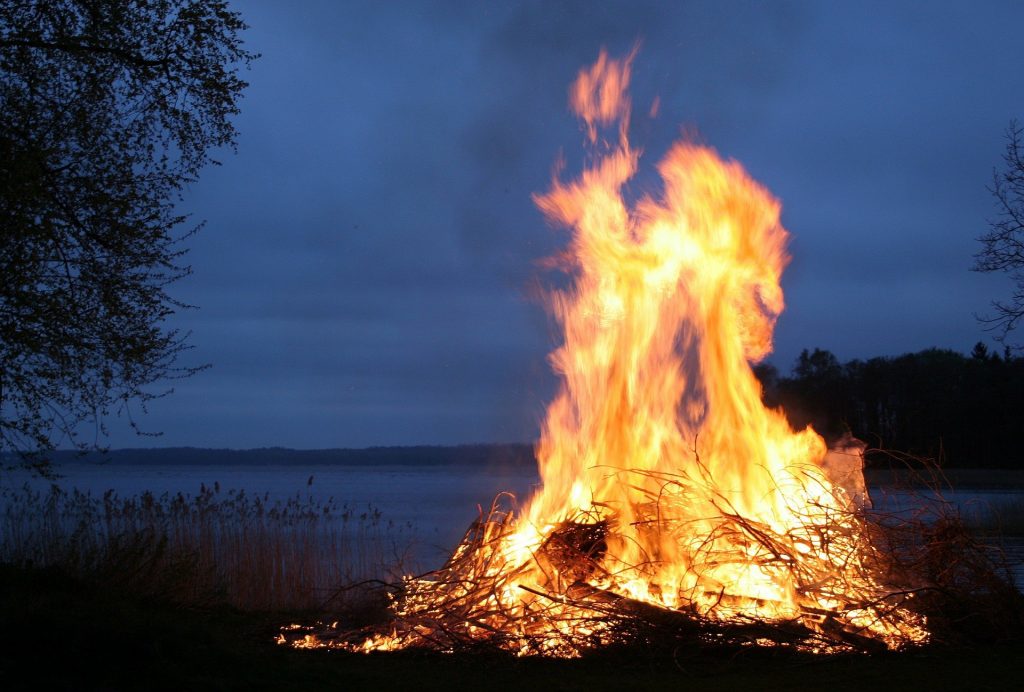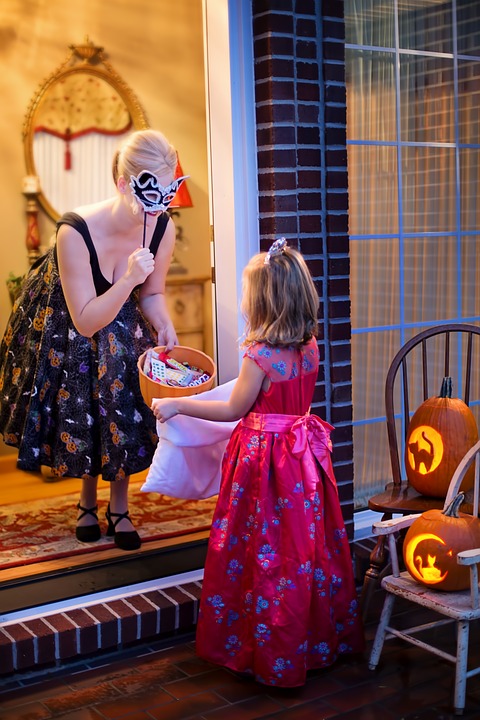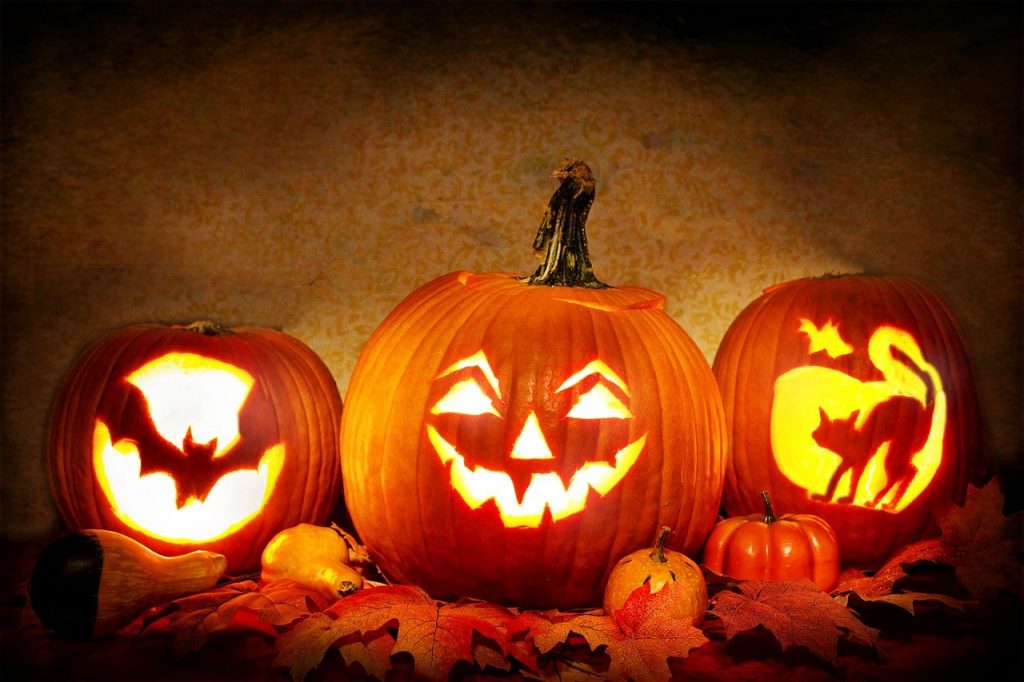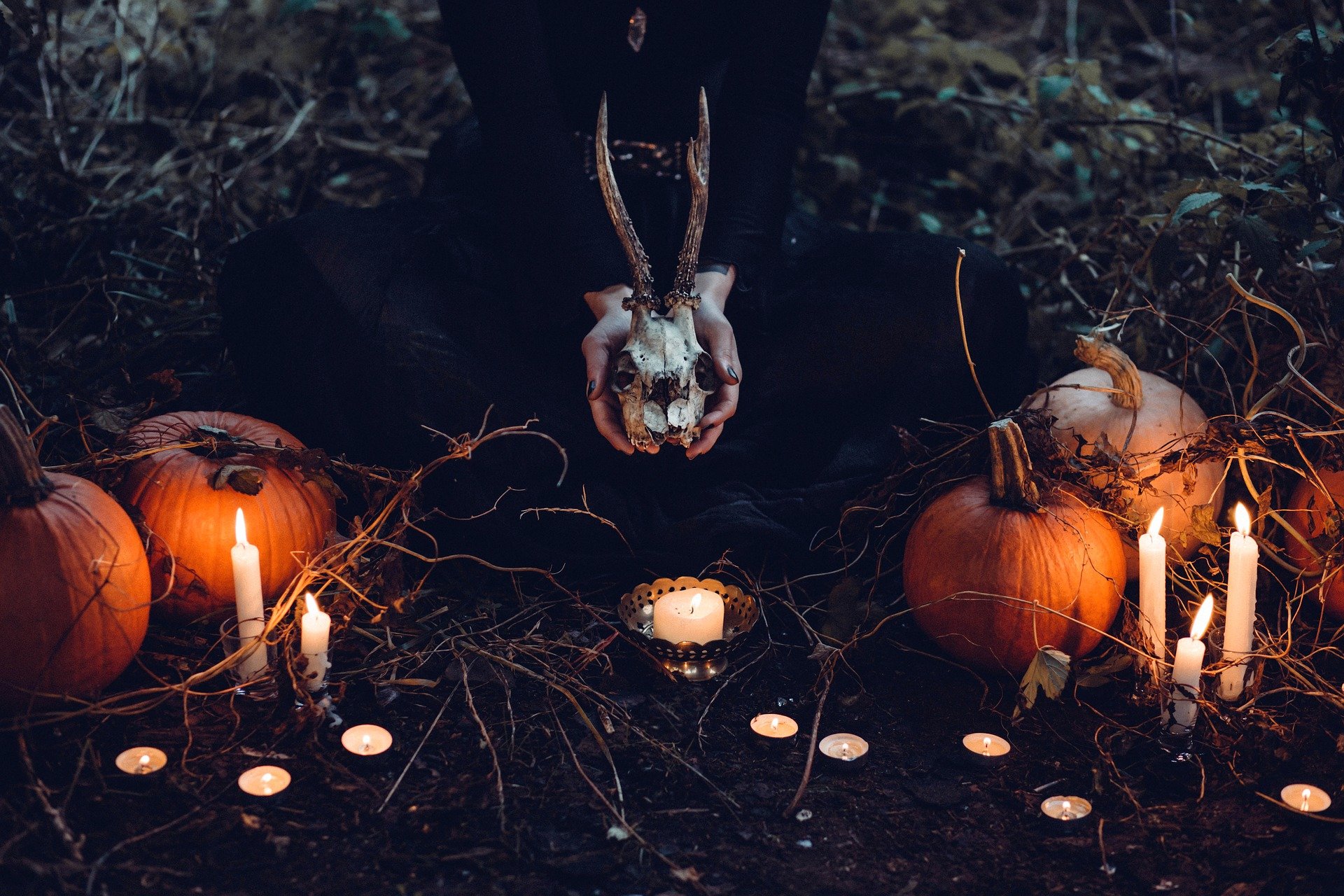Americans love Halloween: the funny, scary and sometimes sexy costumes, jack-o-lanterns, the candy and the ghoulish decorations. The excitement surrounding Halloween seems to emerge earlier and earlier every year. Generally the action begins towards the end of September or beginning of October. The grocery stores start filling displays with candy, faux skeletons and last-minute costume options. The neighbors begin covering their front yards with spider webs and tombstones. Everyone starts to think about costume ideas and planning epic parties. By the time the 31st rolls around, the thrill of Halloween reaches a fever pitch. It’s finally time to celebrate. But how many people know about Halloween’s origin?
The truth is that few people know the truth about why we celebrate Halloween. In fact, the history of Halloween is thousands of years old. Its roots are in the Celtic celebration of Samhain. Samhain was an ancient pagan festival. It signified the end of the harvest season and the beginning of a new year. It is pronounced “sah-win”, and loosely translates to “summer’s end” in Gaelic, according to the Indo-European Etymological Dictionaries. For the druids, this day was thought to have the thinnest separation between the living and the dead. Further, it was believed that humans could communicate to the spirits on the night of Samhain.
The Celtic Origins of Halloween
According to super smart scholarly dudes, Halloween began about 2000 years ago. When Celtic tribes in Europe adopted the festival of Samhain, it celebrated a changing of seasons. However, it was also considered to be the time when humans could communicate with the dead. With their dead relatives in earshot, the Celts would light huge bonfires to give honor to those beyond the grave.

The Dark Spiritual History
Celtic people also believed that this spiritual time allowed the priests to gain knowledge of the future. To maximize the chance that the high priest would guess the next Friday’s winning lotto numbers, the Celts would use their enormous bonfires to burn crops and the corpses of animals as sacrifices for their gods. During the sacrificial ceremonies, the villagers typically wore the skins and heads of dead animals. This was mostly to look awesome, but also so they would be harder to recognize by the ghosts that roamed their villages.

Halloween And Bats
Bats are always associated with Halloween and interestingly they are also linked to centuries old folklore. When the Celtic people lit their bonfires, the flames naturally attracted intoxicated teenagers, but also a multitude of insects and bugs. In turn, this flurry of insect activity attracted the bats. Over time, the constant presence of bats during these ceremonies led people to believe that bats were the harbingers of doom or death. However, the Celts weren’t the only ones to tell legends surrounding these creatures of the night. According to Nova Scotian mythology, if a bat makes its home inside a house, a man of the house will die. Also, if the bat flies around, a woman will lose her life as well.
Halloween and the Christian Influence
As the centuries passed, the Christians realized that this Samhain thing was kind of a badass party, and they needed to do something to prevent everyone from converting to paganism. But first, they needed to re-label things to make them seem more church-like. Christian popes tried to frame these pagan holidays in a super churchy way and during 1000 AD, November 2 was adopted as All Souls’ Day when living prayed for the dead. Later, this day was shifted to November 1 and eventually was called All Hallows. So just like that October 31 became “All Hallows Eve”. It is unclear exactly when the name shifted, but it most likely happened after some priests got too deep into the wine and mispronounced it, and Halloween was born.
Origin of Halloween In America
It was the late 1800’s when Americans began to become more familiar with Halloween as an influx of European immigrants brought over cheap cigarettes and some of their better holidays . These immigrants included millions of Irishmen escaping from the potato famine. Americans began to enjoy Halloween themed parties featuring fun games, scary costumes, fall food and troublemaking. However, by the turn of the century it was still only the fun people who knew how to celebrate like Elvira. Halloween didn’t become the true Mercedes Benz of Holidays until the 1950’s.

The History of Trick or Treating
Trick or treating is perhaps the most popular Halloween ritual. It has gained enormous popularity since the 1950s, when Halloween was accepted as a national holiday, and when the candy companies figured out that they might not go out of business after all. At present, more than 179 million Americans celebrate Halloween. In addition, they also cough up a whopping $9 billion and growing every single year.
Speaking of history, the ritual of trick or treating was also borrowed from ancient European customs. Americans started dressing up in scary costumes and visiting the neighboring houses asking for treats. This even later known as a “trick-or-treat”. The “trick” was actually a threat of vandalism or prank.
During the period 1920s – 1950s, trick-or-treat was seen as an inexpensive way to celebrate Halloween. So, the children from the neighborhood went house to house wearing scary costumes and demanding treats. Homeowners would have to give them treats or risk getting toilet papered, egged or having giant phallic images drawn on the driveway. Actually the early “tricks” were commonly to take an outdoor gate off its hinges or some other non-impressive prank, but we like where pranking has evolved to since then.

Halloween Parties and Costumes
By the end of 1930s, Halloween began to be celebrated as large community events with people holding fun and entertaining parties. Still, even after much effort, schools and communities couldn’t prevent vandalism during this time.
Fortunately, by the 1950s, vandalism had been successfully controlled by civic leaders and Halloween was declared as a national holiday. It was initially intended as a holiday for youngsters. Because Halloween was mostly celebrated by young children (which were plentiful in the 50’s), parties shifted from civic centers to private homes. This made them easier to control and personalize according to the likes of the host. Once everyone realized how badass Halloween parties were, they basically kept up the trend until they evolved into what we experience today.

The History of Jack-O-Lanterns
According to one theory, carved pumpkins lanterns originated from the same Celtic crew that came up with all the other cool stuff. The Celts used to carve root vegetables such as turnips with grotesque faces and then illuminated them using candles or coal. At the time, the Celts thought that these turnip-0-lanterns were so killer that they would ward off the ghosts and the evil dead. This ritual of carving was adopted by Christians centuries later once Samhain evolved into All Hallows’ Eve or Halloween. It is believed that immigrants later brought this tradition to America as well. However, they couldn’t find turnips, cause they’re un-American, so they started using pumpkins in their place, which are way easier to carve anyway.
Why are they called Jack-O-Lanterns?
According to a legend, this term was used to denote a veggie-lantern from an Irish bro named Jack. Although there are many stories, all of them have three things in common: Jack, a devil, and a lit turnip lantern that Jack’s soul uses as it wanders the earth. Sounds like a sweet movie.

